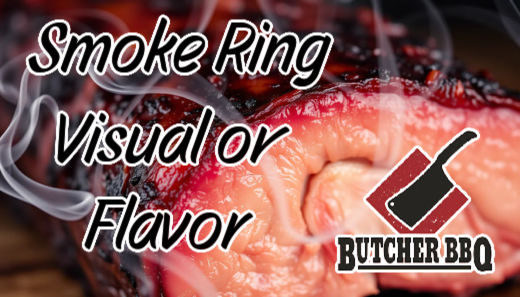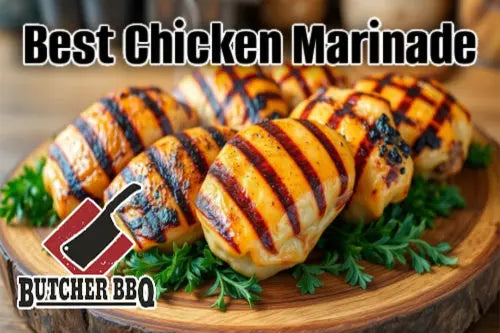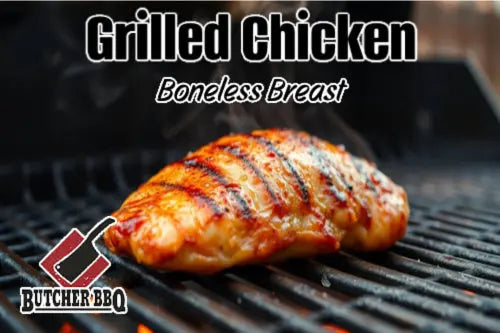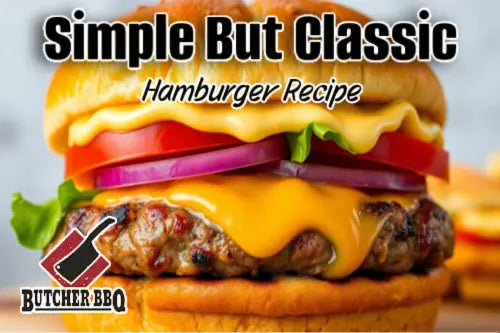
Unlocking the Secret to the Perfect Smoke Ring: A Guide for BBQ Enthusiasts
As a passionate BBQ enthusiast, I've always been fascinated by the elusive and captivating smoke ring. This beautiful pinkish-red hue that appears on the surface of smoked meats is not just a visual delight, but it's also a testament to the skill and technique of the pitmaster. In this blog post, we'll dive deep into the science behind the smoke ring, explore the factors that influence its formation, and uncover the secrets to achieving the perfect smoke ring every time.
What is a Smoke Ring?
A smoke ring is a distinct pinkish-red band that appears just beneath the surface of smoked meats, such as brisket, ribs, and pulled pork. This vibrant hue is not just a result of the smoke itself, but rather a chemical reaction that occurs between the meat and the gases produced during the smoking process.
The smoke ring is often considered a hallmark of well-executed barbecue, as it not only adds to the visual appeal of the dish but also contributes to the overall flavor profile. A deep, pronounced smoke ring is a sign that the meat has been cooked to perfection, with the right balance of smoke, heat, and time.
The Science Behind the Smoke Ring
The formation of the smoke ring is a fascinating chemical process that involves the interaction between the meat, the smoke, and the heat. At the heart of this reaction is the presence of myoglobin, a protein found in muscle tissue.
When the meat is exposed to the carbon monoxide (CO) present in the smoke, the myoglobin in the meat's surface layer reacts with the CO to form carboxymyoglobin. This compound is responsible for the pinkish-red hue of the smoke ring, as it is more stable and resistant to the effects of heat than the original myoglobin.
As the cooking process continues, the heat penetrates deeper into the meat, causing the myoglobin in the interior to denature and turn brown. However, the carboxymyoglobin in the outer layer remains, creating the distinct smoke ring that we all know and love.
Factors Affecting Smoke Ring Formation
While the science behind the smoke ring is fascinating, there are several factors that can influence its formation and depth. Understanding these factors is key to consistently achieving the perfect smoke ring.
Type of Wood Used
The type of wood used for smoking can have a significant impact on the smoke ring. Different woods, such as oak, hickory, and mesquite, produce varying levels of carbon monoxide, which directly affects the intensity of the smoke ring.
Moisture Level in the Meat
The moisture content of the meat can also play a role in smoke ring formation. Drier meats tend to absorb more smoke, leading to a more pronounced smoke ring, while moist meats may have a less defined ring.
Cooking Temperature
The temperature at which the meat is cooked is another crucial factor. Higher temperatures can cause the myoglobin to denature more quickly, resulting in a thinner or less distinct smoke ring.
Tips for Achieving the Perfect Smoke Ring
Now that we understand the science and factors behind the smoke ring, let's explore some practical tips to help you achieve the perfect smoke ring every time.
Proper Meat Preparation
Ensuring that the meat is properly prepared before smoking is essential. This includes trimming any excess fat, patting the meat dry, and applying a dry rub or seasoning to help the smoke adhere to the surface.
Optimal Smoking Techniques
Maintaining the right smoking conditions is key to creating a deep, vibrant smoke ring. This includes using the appropriate wood chips or chunks, controlling the temperature and airflow, and allowing the meat to smoke for the right amount of time.
Temperature Control
Closely monitoring and maintaining the cooking temperature is crucial for smoke ring formation. Aim for a consistent temperature range, typically between 225°F and 250°F, to ensure the myoglobin has enough time to react with the carbon monoxide.
Common Misconceptions About Smoke Rings
Despite the importance of the smoke ring in barbecue, there are a few common misconceptions that are worth addressing.
Color vs. Flavor
Some people mistakenly believe that the depth of the smoke ring is directly related to the flavor of the meat. While the smoke ring can be an indicator of good smoking technique, it does not necessarily mean the meat will taste better. The true test of a well-smoked meat lies in its tenderness, juiciness, and overall flavor profile.
Artificial Methods
Another misconception is that the smoke ring can be artificially created through the use of chemicals or other methods. While there are some techniques that can enhance the appearance of the smoke ring, such as injecting the meat with a solution containing sodium nitrite, these methods are generally frowned upon in the barbecue community, as they can compromise the natural flavor and texture of the meat.
Smoke Rings and Different Meats
While the principles of smoke ring formation are the same across different types of meat, the appearance and depth of the ring can vary depending on the specific cut and characteristics of the meat.
Beef Brisket
Beef brisket is one of the most popular meats for showcasing a beautiful smoke ring. The dense, fibrous nature of the brisket allows for a deep, pronounced ring that can extend several inches into the meat.
Pork Ribs
Pork ribs also lend themselves well to the formation of a smoke ring, though the ring may not be as deep as on a brisket due to the thinner cut of the meat.
Other Meats
While beef and pork are the most common meats for showcasing a smoke ring, it can also be achieved with other proteins, such as chicken, turkey, and even fish, though the results may vary.
Conclusion
The smoke ring is a captivating and highly sought-after feature of well-executed barbecue. By understanding the science behind its formation and the factors that influence it, you can unlock the secrets to consistently achieving the perfect smoke ring every time you fire up your smoker.
Remember, the smoke ring is not just a visual delight, but it's also a testament to your skills as a pitmaster. So, go forth, experiment with different woods, temperatures, and techniques, and let your barbecue shine with the beautiful and alluring smoke ring.
Happy smoking!




